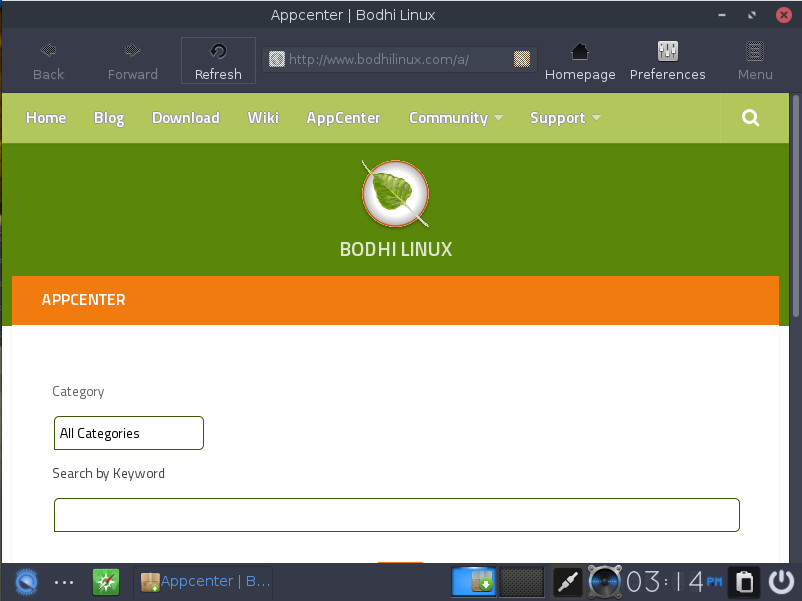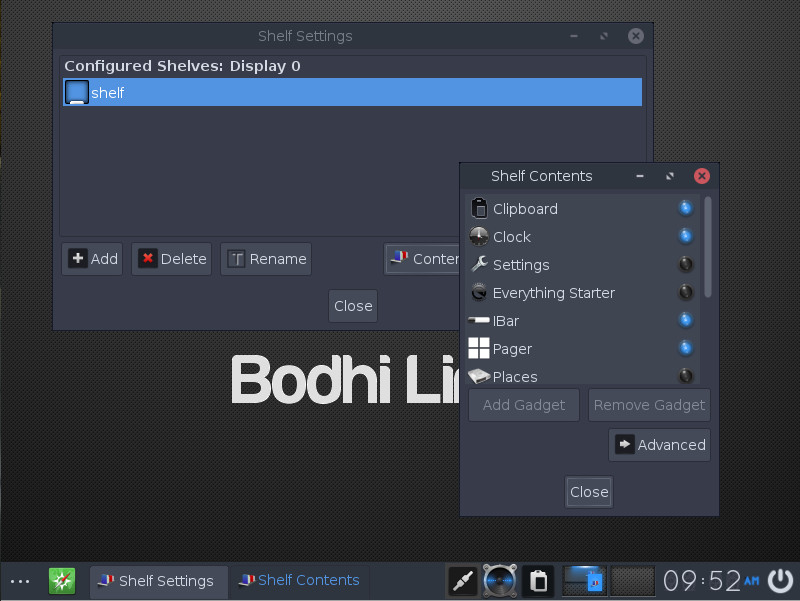When I first started working with Linux, some 20 years ago, I sat in wonder at how much I could do. It seemed the roof had been lifted away and the sky was the limit. That held true for nearly every aspect of the platform. In those first years, I was using the likes of FVWM—which, truth be told, wasn’t terribly user-friendly or flexible. But back then, who knew the desktop could be tweaked into a work of art?
And then one day, I connected with a young man named Mark—whom I latched onto, because the guy knew what he was doing. Mark then connected me to AfterStep, which was like a wonderland of magic on the desktop. I had transparent menus and title bars; when I minimized a window, it spun and flipped to the bottom of the screen. I wound up spending countless late-night hours configuring AfterStep… time I felt was very well spent.
One night, during a rather extended search for a rather elusive AfterStep theme, I came across a new window manager: Enlightenment.
I stood (or, rather sat) in awe. This was the first time I’d come across a Linux desktop that might well woo me away from AfterStep. Much later that night, I had a working installation of Enlightenment and the awe continued.
Needless to say, many years later, when I came across Bodhi Linux, I had to give it a try. This was back in 2011 (during its initial release period), so it was just getting off the ground. Even in those early years, Bodhi was something special. It brought the Enlightenment window manager back to relevance and it was glorious.
What is Bodhi Linux?
Bodhi Linux uses a fork of the Enlightenment DDR-17 release, called the Moksha Desktop, (which enables a number of very nice effects that can be enjoyed on low- to high-end hardware) and is based on the current Ubuntu Linux LTS (Long Term Support) release.
Bodhi Linux is a lightweight desktop platform that installs as easily as any operating system and comes with a minimum amount of applications, but it includes its own software center (Bodhi AppCenter) for installing everything you need to be productive.
The latest release of Bodhi Linux (4.1.0) was like coming home to an old friend. It had been a while since I’d spun up a release of this particular distribution, but I immediately felt at home. The Moksha Desktop still retains all the things I loved about the Enlightenment desktop:
-
Left-click mouse menu (Figure 1)
-
Highly configurable
-
Lightning-fast responsiveness
-
Perfect balance of minimalism and productiveness

One thing you should know about using Bodhi—it is not only a tinkerer’s dream come true, it is both a throwback to another era of Linux and a modern take on that same old-school standard. What I mean is this: There is no mistaking the Moksha Desktop has been derived from a look and feel from the past. However, the developers have given it just enough modernity to bring it to the now. If you’re one of those who feels the best days of the Linux desktop are in the rearview mirror, you can relive that past, with modern technology… all thanks to Bodhi Linux.
The Bodhi Linux team have set for themselves a tall order, but they meet and exceed that goal. And even though Bodhi Linux is often lumped in with those distributions that “breathe new life in old hardware,” I think it’s much more than that. Bodhi is like glimpsing Linux’s past, while remaining grounded in the present.
Out of the box
Bodhi ships with the 4.8.0-34 Linux kernel (Figure 2). You can read the changelog for that particular kernel here.

Upon installation — the one area that might give the new user pause — is the lack of installed applications. Out of the box, you are faced with a bare minimum of tools. You won’t find anything for productivity and you will see the Midori browser. Every time I see this browser shipped as the default, I cringe a bit. Why? Because of warnings similar to that shown in Figure 3.

I get it, Midori is a lightweight browser, but when the default browser isn’t fully supported by the likes of Google, there’s a problem (especially to a Google Docs power-user like myself). There is also a solution. Open the main menu (either by way of clicking the three horizontal dots in the bottom left corner of the desktop or left-clicking anywhere on the desktop) and then click Applications > System Tools > Bodhi AppCenter. When the AppCenter opens (Figure 4), you can search for any software you need to be productive.

The AppCenter works quite well — it’s user-friendly and effective. After a quick install of LibreOffice, I did find that the version installed was out of date. The fault in this doesn’t lie in Bodhi, but in Ubuntu (as that is the most updated version of LibreOffice to be found in the standard repositories). If you’re looking for the newest version of the flagship office suite, your best bet is to download it from the official site and manually install the .deb packages.
One caveat
One thing I’ve always warned people about when first giving either Enlightenment or Moksha a go is that the standard desktop terminology doesn’t always apply. For example, panels (or docks) are referred to as Shelves, so when you go to configure the main Shelf, you’ll go to Main Menu > Settings > Shelves. In the Shelves settings window (Figure 5), you can configure the main Shelf or add new Shelves.

To Shelves, you add Gadgets (as seen in Figure 3), such as the iBar (a bar that allows quick launch icons), Everything Starter (a tabbed-like Main Menu; Figure 6), and much more. Personally, I prefer the Everything Starter to the Bodhi Main Menu, which can be easily taken care of.

If you opt to swap out the Main Menu for the Everything Starter, the good news is you can always get to that Main Menu by left-clicking a blank space on the desktop. So, it’s a win-win all around!
Nomenclature notwithstanding, Bodhi is a desktop that can easily meet the needs of those who like to tinker or those who never venture beyond “out of the box.”
Give Bodhi a go
If you never got to experience the Enlightenment desktop, back in the day, I highly recommend you give Bodhi Linux a try. It has just the right combination of “Those were the days” and “Hey, this works really well.” This modern take on the old classic will have your hardware screaming and you configuring the desktop like it was 1999!
Learn more about Linux through the free “Introduction to Linux” course from The Linux Foundation and edX.





